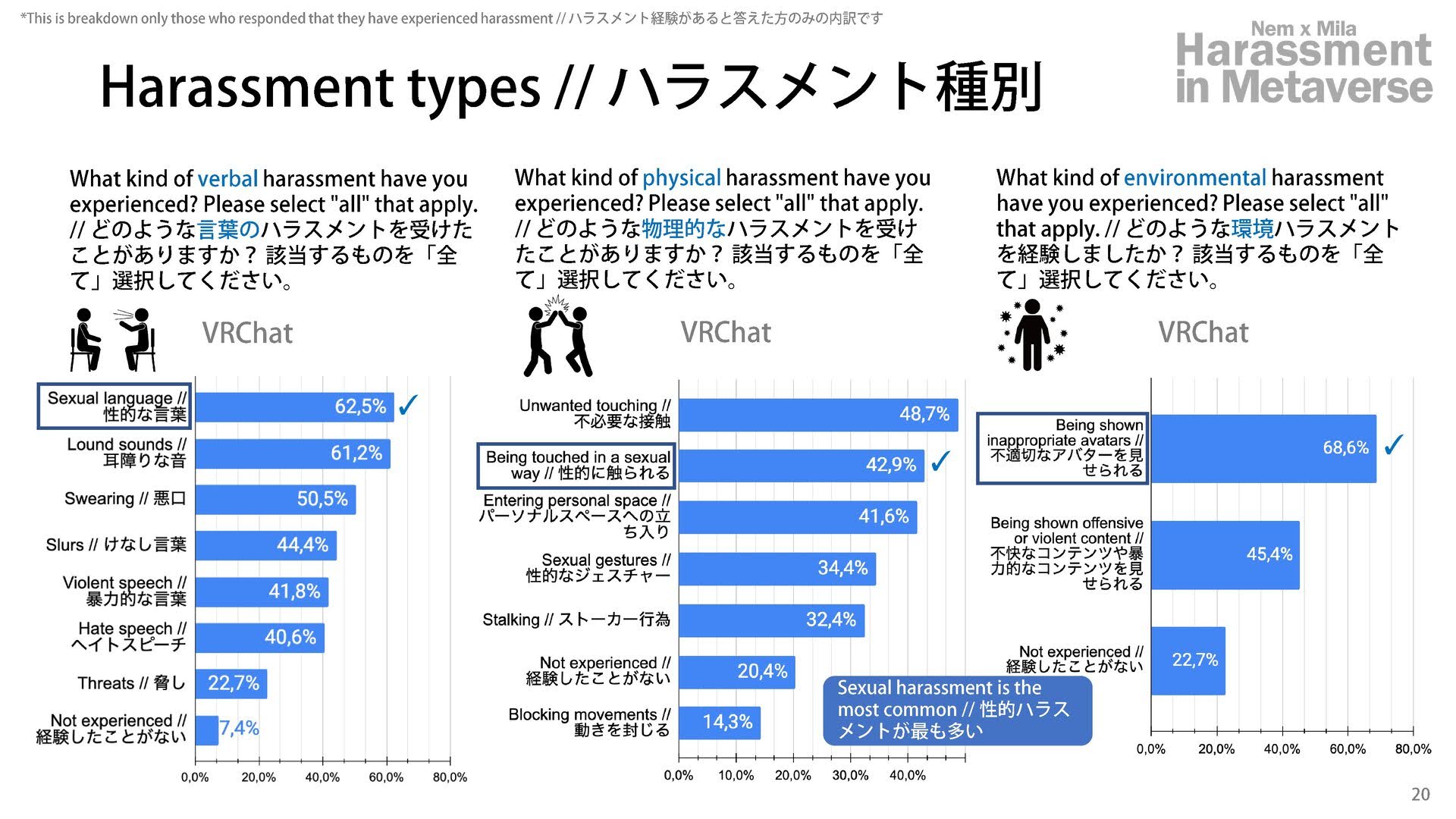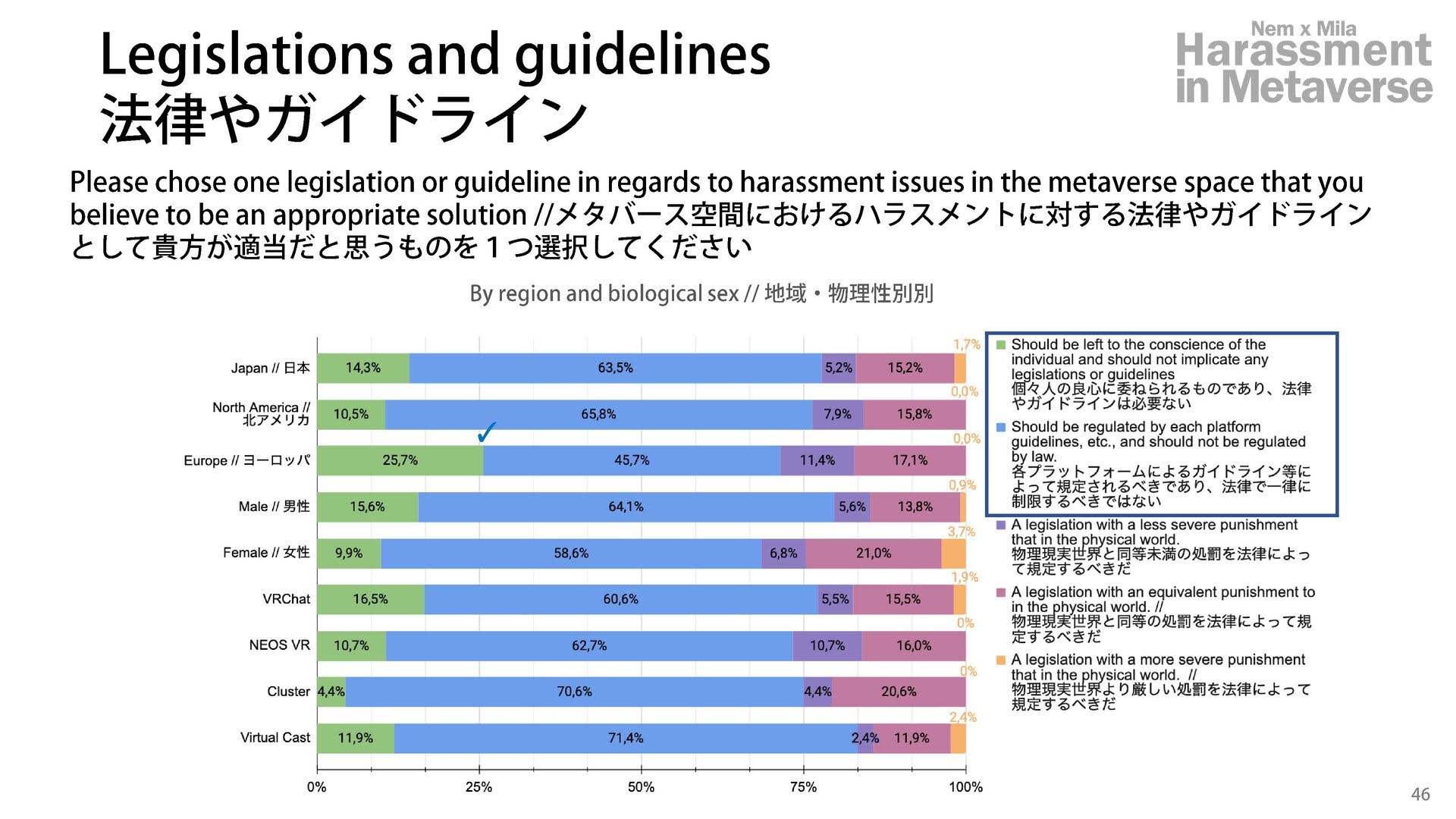What You Need to Know About Harassment in the Metaverse
Swiss anthropologist Mila and metaverse culture evangelist Virtual Girl Nem have recently published their recent report which analyzes over 900 respondents' experiences of harassment unique to VR as well as its impact on life in both the physical world and the metaverse.
In a bid to investigate the reality of harassment that is happening in virtual spaces and in the metaverse, Swiss anthropologist Mila (Liudmila Bredikhina) and metaverse culture evangelist Virtual Girl Nem have recently published their recent report ‘Harassment in the Metaverse’, which analyzes over 900 respondents’ prompts in terms of the summary of types, intensity, and experience rates of harassment unique to VR and its impact on life in both the physical world and the metaverse.

The results of said survey were done months after Mila and Nem first made a call for said research in September this year, and also serves as a follow-up to their 2021 research on the census of social VR.
Enlisted below are some of the data and insight highlights of the survey results:
Where Are Harassment Incidents Prevalent?
The survey notes that harassment in virtual spaces was prevalent in users in North America, with 71.1% of the respondents saying so, which was followed by users in Japan (55.3%) and Europe (45.7%). Meanwhile, the Japanese metaverse platform Cluster was where the greatest number of harassment experiences were recorded, averaging to around 64.7%. This was then followed by VRChat (57.8%) and Virtual Cast (45.2%).
Meanwhile, North American respondents still dominate the list of those who have witnessed harassment in virtual spaces, averaging to around 92.1%, followed by respondents in Europe (68.6%) and Japan (66.4%).
What Are The Types of Harassment in Virtual Spaces?
The report categorizes VR harassment in three categories, namely:
- Verbal (i.e. insults, hate speech, sexist language)
- Physical (unwanted touching, blocking movements, using objects in an inappropriate manner), and
- Environmental (being shown unwanted sexual content, being shown unwillingly violent/sexual content).
In the verbal category, sexual language was the prominent type of verbal harassment at around 62.5%. This was followed by loud noises (61.2%), swearing (50.5%), slurs (44.4%), violent speech (41.8%), hate speech (40.6%) and threats (22.7%).
Meanwhile, unwanted touching topped the list on the types of physical harassment at around 48.7%. This was followed by being touched sexually (42.9%), someone entering a personal space (41.6%), sexual gestures (34.4%) and stalking (32.4%).

Lastly, environment harassment included being shown inappropriate avatars (68.6%) and being shown offensive or violent content (45.4%).
Overall, data from these types of harassment overall envelop the commonality of sexual harassment, even in virtual spaces. However, it is worth noting the large chunk of non-sexual harassment, which was evident by prompts made by respondents across North America.
When asked for the factors that affect these types of harassment, a large chunk of the respondents say it is because of playing in a feminine avatar, as well as identifying as biologically female. Other reasons include nationality and being part of a sexual minority.
VRChat came out as the platform where most respondents feel harassed, whether verbally or physically.
What is the Impact and What Can Be Done?
Despite all of these ongoing harassment incidents, a large chunk of the respondents say that these did not affect their daily life, both in the physical and the digital world.
When asked in terms of the compass of behavior, 89% said that one ‘must rely on common sense’ to determine behavior. In the platforms Neos VR and Cluster, around 60% say they must follow platform community guidelines.

Meanwhile, 86% of respondents say they want a safer metaverse, and 77% say that appropriate user behavior and being respectful with one another is important. In terms of legislation, 77% say that they don't want limitation by legislation to be enforced, and 61% saying that platform guidelines are enough.
To get the full version of the report, you can view the official Japanese and English releases of the survey results announcement in the link below.
SOURCE: Report Publication Portal (English / Japanese)